Rates Are Dropping, But Inventory Is Rising — How Investors Can Play the New Market Cycle
A Pivotal Month for Real Estate Investors
As we turn the corner of Q3 into Q4 2025, the housing market is showing signs of a rebalancing rather than a runaway boom or a collapse. For wealth-builders, this is a moment to pause, reflect and calibrate strategy. Several lines of data suggest both opportunity and caution — so let’s walk through the key themes and then highlight what you should be doing now to position wisely.
1. Lower financing costs are stirring hope
One of the more encouraging signals: the Federal Reserve has begun easing policy, which is rippling into mortgage rates. For example, one report notes the 30-year fixed rate has dropped to the ~6.3 % range, its lowest since October 2024.
For a wealth-builder this matters: cheaper debt means higher leverage potential, better cash‐flow math and improved return on investment (ROI) assumptions. If you’ve been sitting on the sidelines waiting for rates to drop or debt to become more affordable, this could be your green flag.
2. New home sales are heating up — but supply lags
The data reveals a surprising uptick in new homes sold: one source shows that August new home sales jumped 20.5 % month-over-month, and are about 15.4 % above last year’s figure.
Inventory in that new-home market, however, remains stretched and starts are actually down (e.g., total starts fell ~8.5 %, single-family starts ~7 %). hbsdealer.com
For investors, this suggests a mixed signal: on one hand, demand for new construction is stronger than expected; on the other, future supply might not catch up anytime soon. That imbalance can create pricing and rental tailwinds in certain segments. Yet we must not assume it is universal — local market and product-type matter.
3. Builder sentiment is improving — but with caveats
Builder confidence as measured by the National Association of Home Builders / Wells Fargo index remains modest but shows that expectations for future sales improved (a six-month high for that metric). Builders are increasingly offering incentives and price adjustments (e.g., ~39 % of builders reported price cuts averaging ~5 %).
That indicates builders are responding to cooling demand or increased competition. From a wealth-builder’s standpoint: when your competition (builders) is offering concessions, your acquisitions and valuations need to reflect those realities. Don’t overpay assuming a “straight up” market.
4. Existing-home market still sluggish, and inventory is rising
While new-home sales show strength, the existing-home segment remains soft: total sales are stuck near ~4 million annual rate (lowest since mid‐1990s in some data), year-to-date down ~1.3 % NSA.
Meanwhile inventory continues to rise: active listings up ~20.9 % YoY in one analysis, months-supply now exceeding 4–5 months in many markets (some metro‐areas far more).
For the investor: rising months-supply = weaker pricing power, more negotiation room, longer hold times. In markets that were super hot and ultra‐tight, this signals a cooling. So refinancing a “buy & hold” strategy into a “buy smart, manage risk” strategy is wise.
5. Demographics & structural tailwinds are shifting
Beyond rate/housing-cycle mechanics, longer-term fundamentals are shifting. The key home-buying age cohort (early-30s) is shrinking; household formation is softening; immigration and demographic composition are changing.
That doesn’t mean the game is over — far from it — but it means that the easiest gains of the past decade may not repeat. For the active wealth‐builder: you’ll want to lean into markets or segments where demographic support is strong (e.g., migration hubs, affordability-constrained markets, aging-in‐place markets) rather than hoping for general market “lift.”
What This Means for Your Wealth-Building Playbook
Here are some tactical takeaways based on the above:
Prioritize quality over speculation. With pricing power moderating, overpaying for deals assuming “prices always go up” is riskier. Focus on properties with strong cash flow, good location fundamentals, and upside via active value-add rather than passive appreciation.
Leverage caution: debt becomes attractive, but only if you lock in smart terms. With rates trending downward, this is a moment to lock in favorable financing if you can, but ensure your numbers work at conservative occupancy/exit assumptions.
Segment matters. New‐home construction in the under $500k tier is seeing more movement. That suggests more activity in the “affordable” segment, less so at high luxury. If you invest in luxury or high-end, you may face greater risk of softness.
Watch local inventory trends. In markets with long months-supply or rising listings, negotiation becomes your asset. In markets where supply remains low, you may capture better value. Use your data.
Stay nimble and ready. Because we are in a transitional phase (from restrictive to more stimulative policy), surprises can happen. Having a pipeline or options ready to deploy when a regional correction or local opportunity emerges will pay dividends.
Expect slower appreciation. With demographic tailwinds softer, and supply creeping up, don’t count on big double-digit annual home-price gains. Instead, build your returns from multiple levers — upside in value‐add, rental growth, tax advantages, and good debt coverage.
Final Thought
The housing market update for September 2025 is neither alarm nor fanfare — it’s a recalibration. For wealth-builders, that’s actually exactly the position you want: good deals become more visible, but you must be disciplined. Interest rates are trending the right way, demand is showing signs of life, but risks remain in inventory, region, product type and macro-economics.
If you approach this phase with a clear strategy — focus on cash-flow, value-add, local fundamentals, and realistic assumptions — you’ll be well-positioned to benefit from the next leg of the cycle rather than being caught overexposed when the music stops.

